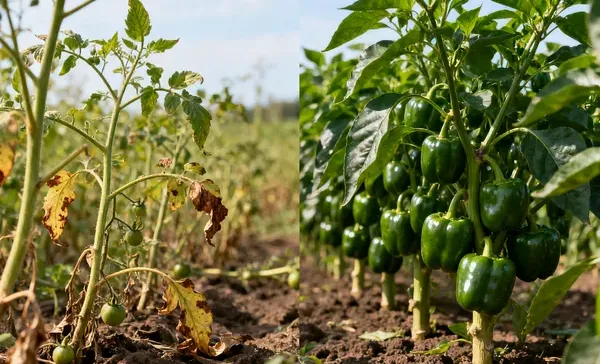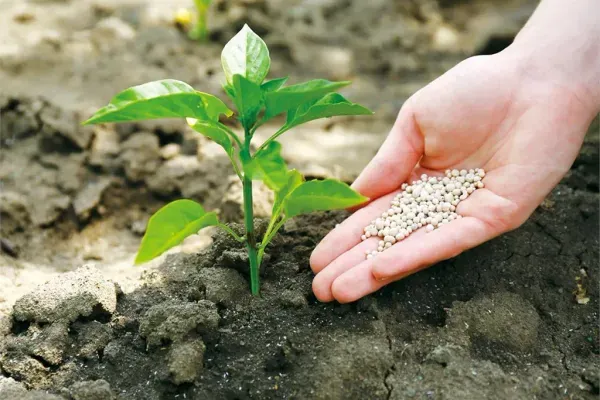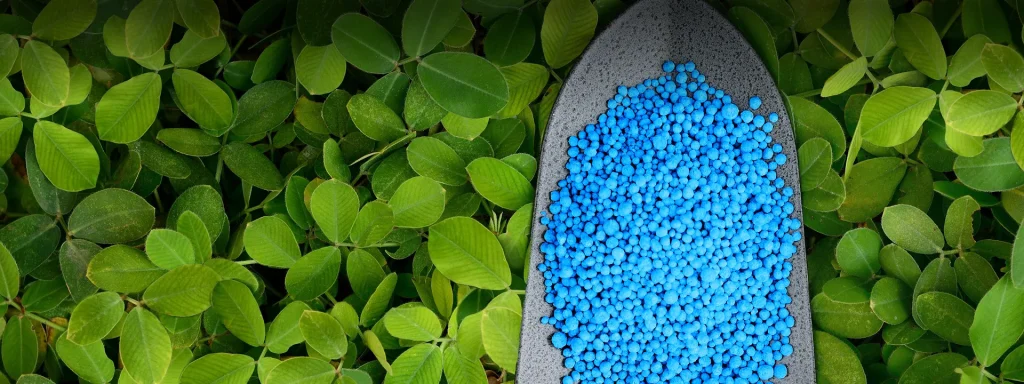Avoid your inquiry is delay response, please enter your WhatsApp/Skype along with the message, so we can contact you at the very first time.
We will reply you within 24 hours. If for urgent case, please add WhatsApp/WeChat:
Warning: Undefined variable $public in /www/wwwroot/lvfertilizer.com/wp-content/themes/hyhadmin/header.php on line 350
Warning: Trying to access array offset on value of type null in /www/wwwroot/lvfertilizer.com/wp-content/themes/hyhadmin/header.php on line 350
,. Or call
Warning: Undefined variable $public in /www/wwwroot/lvfertilizer.com/wp-content/themes/hyhadmin/header.php on line 350
Warning: Trying to access array offset on value of type null in /www/wwwroot/lvfertilizer.com/wp-content/themes/hyhadmin/header.php on line 350
directly.
NPK imbalance hides in plain sight. Leaves change first. Then roots. Finally yield. I show clear signs, simple tests, and safe fixes you can use now.
NPK imbalance limits growth, weakens roots, and reduces yield. Too little starves plants. Too much causes salt stress and nutrient lockout. Balanced, staged feeding

NPK imbalance vs NPK balance
I use a simple plan. I read the crop. I test soil and leaves. I match N, P, and K to stages. I split doses. I watch EC and pH. Small changes work.
Plants need energy, structure, and water control. N, P, and K drive these three pillars. Balance matters more than any single number.
Nitrogen builds leaves and proteins, phosphorus supports roots and energy flow, and potassium manages water and stress. Balanced NPK gives steady growth, firm tissue, and clean harvests.
Nitrogen powers chlorophyll and amino acids. With enough N, canopies fill fast, and photosynthesis rises. With too little N, leaves turn pale, and growth slows. With too much N, tissue softens, pests increase, and maturity delays.
Phosphorus moves energy inside cells. It supports early rooting, flowering, and seed set. With low P, roots stay small, growth stalls, and flowers abort. Some crops show purple hues on older leaves. Too much P can reduce zinc and iron uptake.
Potassium controls stomata and enzyme activity. It moves sugars, hardens tissue, and improves stress tolerance. Low K shows as edge scorch, weak stems, and poor fruit fill. Excess K can push out magnesium and calcium.
Strong plants need all three nutrients in step. High N can mask weak roots if P is short. Extra K can block Mg and Ca. Imbalances also shift root-zone pH and EC. That invites micronutrient issues. I avoid this with staged programs and small adjustments during stress.
| Nutrient | Main role | Typical deficiency sign | Risk when excessive |
| N | Leaves, proteins | Pale leaves, slow growth | Soft tissue, lodging, late harvest |
| P | Roots, energy, seeds | Slow start, poor flowering | Zn/Fe lockout, brittle tissues |
| K | Water control, stress | Edge scorch, weak stems | Mg/Ca antagonism, salt stress |
I do not chase dark green leaves alone. I look for firm stems, balanced internodes, and clean flowering. That shows real balance, not just color.
Potassium shortage shows first at leaf edges. Then it shows in stems and fruit. Both hurt yield fast.
Two core effects are poor water regulation that causes edge scorch and wilting, and weak structural strength that causes lodging and low fruit quality.
Potassium drives stomatal movement. When K is low, stomata do not open and close well. On hot or windy days, leaves lose water too fast. Margins turn yellow, then brown. Older leaves show it first. Photosynthesis drops, so growth slows even if water is present. I see this most in sandy soils or fields with high sodium irrigation water.
K moves sugars to sinks. With low K, fruits stay small, less sweet, and soft. Stems lack strength. Grains lodge before harvest. Tubers bruise more and store poorly. Shelf life falls. Juice solids fall in fruit crops. These results cost more than the K itself.
| Symptom | Why it happens | Yield impact | What I do |
| Leaf edge scorch | Poor stomatal control | Lower photosynthesis | Supply SOP or K-rich fertigation |
| Wilting in heat | Water loss exceeds uptake | Flower drop | Dose during cool hours; improve irrigation |
| Weak stems | Poor sugar transport | Lodging, loss at harvest | Balance K with Ca/Mg; reduce sodium |
| Small, bland fruit | Slow phloem loading | Low grade, weak storage | Split K through fruit fill stages |
I fix K shortages with tissue tests, not guesswork. I then feed K in smaller, frequent doses. I keep Ca and Mg steady to hold structure while K recovers.
Fertilizer works when it fixes the real limit. It fails when it fights the wrong problem.
Right-rate fertilizer speeds early roots, builds a stable canopy, and supports strong flowering and fruit fill. Wrong-rate fertilizer wastes money and can slow growth.

What is the impact of fertilizer on plant growth
Plants change demand by stage. Early growth needs phosphorus near the seed or root zone. Mid growth needs nitrogen and potassium in split doses. Reproductive growth needs more potassium and enough phosphorus to move energy. If I feed one big shot, I miss the curve. So I split and place. In drip systems, I run daily or weekly feeds. In rain-fed fields, I time topdress with the forecast.
Ammonium can lower pH near roots and hold in cool soil. Nitrate moves with water and can leach. Urea needs hydrolysis time. I choose forms to fit soil, water, and temperature. For phosphorus, I use MAP or soluble grades for close placement. For potassium, I use sulfate for chloride-sensitive crops. I watch EC to avoid salt stress, and I keep pH near the crop’s sweet spot.
| Stage | Main focus | What I apply | What I watch |
| Establishment | Roots and energy | Starter P, modest N, some K | Cool soil, stand count |
| Vegetative | Canopy and enzymes | Split N, baseline K | Leaf color, internode length |
| Reproductive | Fruit fill and stress | Higher K, steady P, moderated N | Flower set, fruit size |
I track progress with leaf tests and simple field notes. I want upright leaves, firm stems, and even flowers. That shows the program is on track.
Excess nitrogen looks good at first. Leaves turn dark. Growth explodes. Then problems pile up.
Too much nitrogen causes soft tissue, delayed maturity, lodging, and higher disease and pest pressure. Quality often falls even if biomass rises.
High nitrogen increases chlorophyll and water in leaves. Tissue becomes soft. Soft tissue bends and breaks. Pests like aphids and diseases like mildew find easy targets. The plant spends energy on leaves, not roots or fruit. Maturity shifts later, so harvest collides with heat or frost. In cereals, heads are heavy on weak straw. In vegetables, nitrate can build up in edible parts under low light.
I first stop extra nitrogen. I add potassium and calcium to harden tissue. I open the canopy to move air and light. I also check sulfur, because sulfur helps nitrogen use. If soil nitrate is high, I use irrigation to move it deeper only when the crop can reach it or when leaching is safe and legal.
| Symptom | Field sign | Likely cause | What I change |
| Lush, soft leaves | Very dark green, fast growth | N oversupply | Cut N; add K/Ca |
| Lodging | Bent or fallen stems | Weak straw | Balance N:K; manage density |
| Late harvest | Delayed bloom or fill | Vegetative bias | Reduce late N; adjust irrigation |
| Disease surge | Mildew, aphids | Dense, humid canopy | Improve airflow; targeted protection |
I aim for firm, moderate green, not extreme green. That balance pays at harvest.
Overuse burns roots, shifts pH, and blocks other nutrients. It also hurts soil and water. It raises costs without returns.
Overuse raises EC, drifts pH, triggers antagonism, and increases environmental loss. Careful dosing, split feeds, and testing prevent damage and protect profit.
Every fertilizer adds salts. High EC pulls water out of roots. Plants wilt even in wet soil. Tips burn. Growth stops. Ammonium forms lower pH near roots; nitrate forms raise it slightly. Long bias pushes pH out of range. Then iron, zinc, and manganese become less available. Leaves turn yellow between veins. I rotate N forms and use buffers to hold the range.
Nutrients compete on exchange sites and transport paths. High potassium can suppress magnesium and calcium. High phosphorus can reduce zinc and iron. High calcium can limit boron in fast tips. Overuse makes these fights worse. Loss pathways then waste what we paid for. Nitrate leaches. Ammonia volatilizes from surface urea. Phosphate ties up with calcium or iron when placement is poor.
| Overuse issue | Plant effect | Soil/Water effect | Practical fix |
| High EC (salt) | Root burn, leaf scorch | Salt buildup | Lower dose; leach; monitor EC |
| pH drift | Micronutrient chlorosis | Poor availability | Rotate N forms; add chelates |
| Antagonism | Hidden hunger | Imbalanced exchange | Rebalance ratios; tissue test |
| Nutrient loss | Weak response | Leaching/runoff | Time with weather; use inhibitors |
I keep records by block. I compare cost per ton and profit per hectare. The best plan is often the one with less fertilizer and better timing.
Yes, when it removes the true limit. No, when it adds to a different problem. The plan must fit crop and season.
snippet paragraph:
Fertilizer increases yield when it targets the limiting nutrient and matches crop demand over time. Balanced NPK with needed micronutrients lifts both yield and quality.

Does fertilizer increase the yield?
I begin with soil tests and water tests. I check texture, organic matter, pH, sodium, chloride, and bicarbonate. I set a realistic yield goal. I design a base NPK for that goal. I choose water-soluble grades for drip and clean blends for broadcast. I place P close to roots. I split N and K. I add micronutrients only when data or history says risk is high.
I watch key stages. I sample leaves. If levels are fine, I do not add more. If a gap appears, I correct with a small dose. I track EC and drain water in greenhouses. In fields, I time topdress before a gentle rain. I use inhibitors only where they pay. I aim for market targets: size, color, sugar, test weight, oil, or protein.
| Practice | Why it works | Simple tool |
| Soil and leaf tests | Remove guesswork | Lab reports; sap tests |
| Split applications | Match demand curve | Drip tanks; staged topdress |
| Balanced ratios | Avoid lockout | Crop-specific N:K guides |
| Loss control | Keep nutrients in zone | Weather timing; inhibitors |
I trust small, steady moves. They protect yield and quality without waste.
Balance N, P, and K. Test first. Split doses. Watch EC and pH. Adjust early. Small changes protect yield and profit.